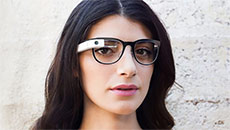Amid news that bars in San Francisco and Seattle in the US have already banned wearers of Google Glass, a wearable computer that allows users to take photos and record videos, a Berlin-based artist has come up with a detector that can help you create your own "glasshole-free zone".
"To say ‘I do not want to be filmed’ at a restaurant, at a party, or playing with your kids is perfectly OK. But how do you do that when you do not even know if a device is recording?" Julian Oliver, who designed the gadget, was quoted as saying.
Oliver wrote a simple programme called Glasshole.sh that detects any Glass device attempting to connect to a Wi-Fi network based on a unique character string that, he said, he found in the MAC addresses of Google's wearable computers.
A MAC address is a hardware address that uniquely identifies each node on a network.
This is how it works.
Install the programme on a Raspberry Pi or Beaglebone mini-computer and plug it into a USB network antenna.
The gadget becomes a Google Glass detector, sniffing the local network for signs of Glass users.
When it detects Glass, it uses the programme “Aircrack-NG” to impersonate the network and send a “deauthorisation” command, cutting the headset’s Wi-Fi connection.
It can also emit a beep to signal the Glass-wearer’s presence to anyone nearby, said a report in wired.com.





